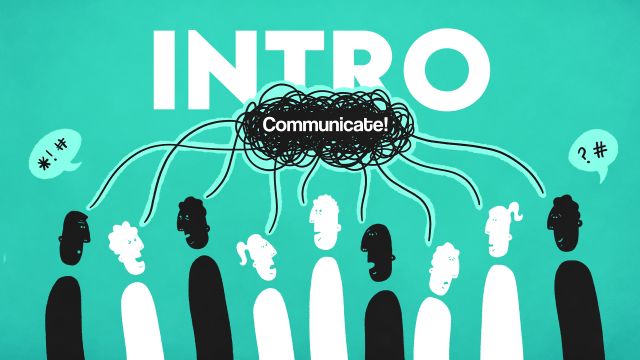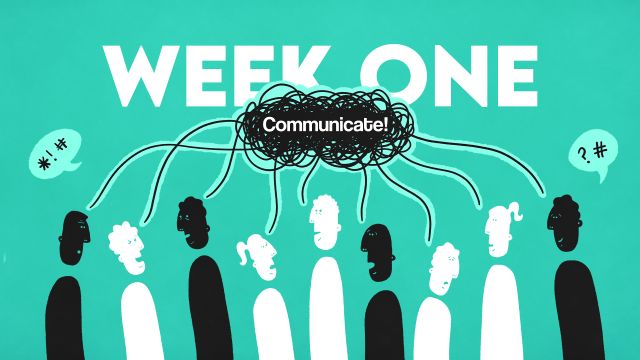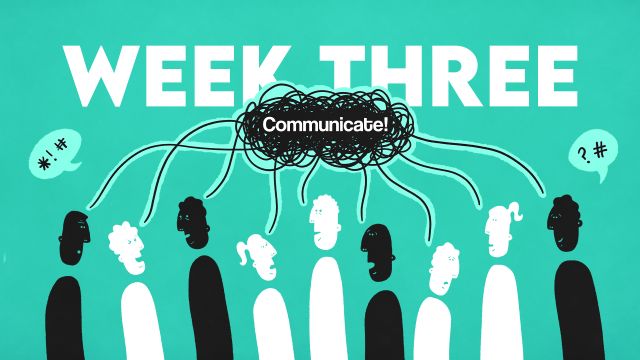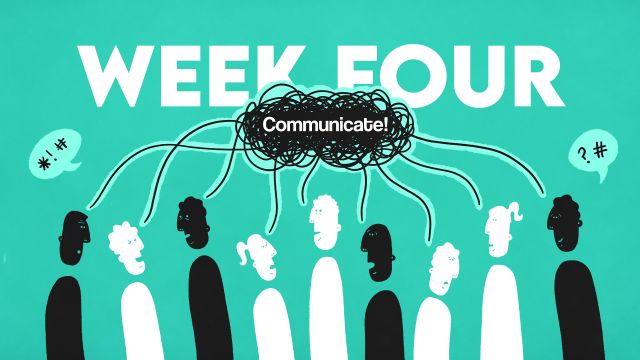Communicate! - Connect Groups
What Are Connect Groups?
What are Connect Groups?
‘Connect Groups’ is the name we give to small informal gatherings who decide to meet together to explore the Bible alongside our monthly themes. These groups are independent and folk can simply set up their own Connect Group themselves, meeting together with friends and family on their own basis. In this time of Lockdowns when people can’t get together physically this material can still be used to meet together online.
Each month we produce a range of questions to adapt our themes for group discussion. The material is offered as a starting point and there is no need to go through all the questions.You can pick and choose, tailoring it to suit the needs and interests of your group. Each ‘Part’ could form the basis of a weekly roughly 90 minute meeting but you could break it up differently. Let us know if you would like to find out more about Connect Groups and different ways of linking into the Sanctuary First community.
We all come to the Bible with our own questions, insights and barriers. The guiding principle we have in writing these is to ask questions we don’t already know the answer to! Our hope is to facilitate open-ended discussions. Often the most valuable parts of group chats are the bits that go off on bizarre tangents. And there’s nothing wrong with that. Jesus knows a thing or two about bizarre tangents…
Need some advice on starting your own Connect Group?
Get in touch.
Introduction
Introduction
 Words, gestures, expressions, signs, body language, dance, pictures, rhythm, sighing, silences… we humans speak volumes… and constantly. There are myriad ways of communicating with one another and with God. Over time we tend to develop habits for how we pray, worship, sing, or generally express ourselves to God and each other. There is a richness in these repeating patterns, of saying words handed down through the years or walking in the same steps as our ancestors, but we can also sometimes end up ‘checking out’. We can find ourselves no longer really communicating, simply going through the motions with no connection.
Words, gestures, expressions, signs, body language, dance, pictures, rhythm, sighing, silences… we humans speak volumes… and constantly. There are myriad ways of communicating with one another and with God. Over time we tend to develop habits for how we pray, worship, sing, or generally express ourselves to God and each other. There is a richness in these repeating patterns, of saying words handed down through the years or walking in the same steps as our ancestors, but we can also sometimes end up ‘checking out’. We can find ourselves no longer really communicating, simply going through the motions with no connection.
Because often, as Marshall MacLuan famously said, the medium is the message! It’s not just a matter of what we say to God and to one another, it’s how we say it. Established, enriching life-giving traditions are a great way of communicating if they are expressed in an enriching and life-giving way. If we’re half asleep, zoned out and shutting down… not so much. What sparked the original tradition is no longer coming alive if we are just ticking the boxes.
There are so many ways of communicating with God and that’s fantastic. Sometimes we have prioritised particular ways over others as habits change. It’s worth remembering that while we can tune out by just thoughtlessly repeating ourselves we can also miss the point by chasing novelty and excitement at the expense of communicating. A case of all noise and no signal.
When someone’s worship, their way of communicating to God, is strikingly different to ours we can get caught up in the differences. Rather than wondering if they’ve found new ways of saying the same things, we get suspicious and assume they’re saying something different. God loves humanity and wants us to be diverse and varied. It is brilliant that there are countless ways we can communicate with God and many ways God can communicate with us (not least of all through Communion!) and the key is keeping open and heartfelt in how we respond to divine love.
So this month, at the start of a new year, we want to explore what happens when we refocus on the communication itself — not the what of being and doing church but the how. Faith is like sharing a story, or a telling joke, or singing a song — it’s not just a matter of remembering all the details, getting everything in the right order, and hitting the notes. Timing, expression, delivery, phrasing, pauses — it’s all part of it. Our faith needn’t be a technically proficient but soulless masterpiece. God delights in the heartfelt running up and down of the keys, honestly played and expressed.
When we pray God doesn’t sit there with a notepad transcribing everything and scrolling on his phone in the bits when we’re not ‘talking'. God listens to the pauses and the silences, too. Like a good friend — who can instantly tell when you’ve had good news or bad news before you even open your mouth — but even more so, God knows you.
So we have been on a journey these last three months — looking back on our Legacy of Hope, being in the present and Finding Time in the here and now through the timeless season of Advent, and now at the start of a new year we look to the future thinking about how we can take what we’ve learned and Communicate!
SEEDS TO SOW: We have a 'Seeds to Sow' phrase at the beginning of each section. These are open-ended and optional and are designed for people wanting to develop their own ideas/resources in response to the material. Perhaps if using this material as a group you could use these prompts to inspire a time of prayer, or drawing, or creative writing? They are intended to be short and sweet, simply a starting off place for you and your imagination, be encouraged to tailor/develop as suits your group.
Download the Discussion Questions as a PDF
These discussion questions adapt our monthly themes for small Connect Groups or personal Bible study (look up the Communicate! Resource Pack PDF for more information on this month's theme). The questions are divided into 4 parts to correspond with the 4 weeks of the Daily Worship theme. They are offered as a guideline and there is no need to go through all the given questions in a single session, or in the following sequence. Feel free to pick and choose, or adapt to what interests you or your group.
Find how to get involved: Connect group Blog
Week One
Written and Read
SEEDS TO SOW: HOW DOES CREATION SING? *
 Introduction: One of the most obvious ways we communicate with God and with one another is through reading and writing. We read ancient texts and write songs and prayers and sermons in response. We read poetry, we journal, we look up commentaries, we write letters, send messages. The written word is an uncanny thing. It’s a way of outsourcing memory, ideas and emotion, holding on to truths and preserving a legacy. It is a workshop for language where we can craft new ideas and express complex concepts. It’s also a way of remembering to get milk. And to tell someone you love them. Our lives are full of writing, and as we read and write we do so alongside the one who read to the stars and wrote the fabric of reality into being.
Introduction: One of the most obvious ways we communicate with God and with one another is through reading and writing. We read ancient texts and write songs and prayers and sermons in response. We read poetry, we journal, we look up commentaries, we write letters, send messages. The written word is an uncanny thing. It’s a way of outsourcing memory, ideas and emotion, holding on to truths and preserving a legacy. It is a workshop for language where we can craft new ideas and express complex concepts. It’s also a way of remembering to get milk. And to tell someone you love them. Our lives are full of writing, and as we read and write we do so alongside the one who read to the stars and wrote the fabric of reality into being.
Read Psalm 119: 10-11,105-106
The poem The Gate Of the Year (link to wikipedia entry here) reflects a great deal of the verses we have been reading in the psalm above. Do you think the poet is encouraging us to trust God even when we can’t see the way ahead? How can you find the hand of God? The poem implies it with such ease. How does God communicate to say ‘Here is my hand’?
Talking about trusting God, how do we communicate trust among ourselves? How important are our written words?
Read Ephesians 3: 1-12
Discussing the idea of mystery and grace.
What is the difference between understanding gained by a revelation, as to understanding gained by reason? Is faith gained by reason or revelation? How do we receive revelation anyway?
Can we read people like books? God seems to want to ‘show off’ the church as a community of his grace — but to whom is he showing the church? Is this another mystery? Who is reading the church?
Read Daniel 5
A fascinating mystery story. From this story comes the phrase “the writing’s on the wall”. What lesson about communication have you learned from this story?
* SEEDS TO SOW: These are open-ended and optional prompts and are designed for people wanting to develop their own resources in response to the themes. Perhaps if you are using this material as a group you could use these prompts to inspire a time of prayer, or drawing, or creative writing? They are a short and sweet, simply a starting off place for you and your imagination. Tailor and develop as suits your group.
Week Two
Voiced
SEEDS TO SOW: DO YOU HAVE A ‘PRAYER VOICE’? *
 Introduction: Laughing, sighing, singing, sobbing, shouting, mumbling, whispering, humming — our voices are a rolling broadcast of our lives. A lot of our faith is mediated through the voice, whether it’s the voice in our head thinking things through, the heartfelt belting it out on a Sunday, the quiet bedside prayer, or the still small voice at the heart of the universe. Our faith is not just about the words we say, it’s about how we say them, and indeed the things we say without words — the yells, the cries, the weeping, the groaning, the whistling, the chortling, the breathing.
Introduction: Laughing, sighing, singing, sobbing, shouting, mumbling, whispering, humming — our voices are a rolling broadcast of our lives. A lot of our faith is mediated through the voice, whether it’s the voice in our head thinking things through, the heartfelt belting it out on a Sunday, the quiet bedside prayer, or the still small voice at the heart of the universe. Our faith is not just about the words we say, it’s about how we say them, and indeed the things we say without words — the yells, the cries, the weeping, the groaning, the whistling, the chortling, the breathing.
Read Psalm 29
The dynamic range of God... From the thundering voice here to the gentleness of Jesus’s pastoral reassurances in the gospels, to the groans and sighs too deep for words from the Spirit (see questions 3 below) — the Trinity has range! Throughout the Bible we see the power and multifaceted nature of God’s voice in different situations and contexts. We are made in the image of God and our God is expressive.
How can we respond with a range of expression to God? Sharing all of who we are, our experiences and our emotions, from anger to wonder, to grief, to gratitude? And what are the activities that help us express ourselves to God? (In the film Chariots of Fire Eric Liddell, the Scottish runner says: “...when I run I feel his pleasure.”)
Read Acts 10: 34-43
The message spreads...
Before it was written down this message was told voice by voice. Think of all the different types and tones of voice that carried the gospel on their breath. The witnesses — their style, their mannerisms, their convictions. What might they have been like? And then share how you see this legacy continuing today. What are the varied voices today from music to drama to poetry?
Read Matthew Romans 8: 22-27
Wordless worship... We can communicate vocally without communicating verbally. From vocalising through song to sighs and yells, cheers and groans. The Holy Spirit is there with us beat for beat even when there are no words.
Can you identify with aspects of the above statement? Do you ever find yourself lost for words when praying? If so, what do you do?
* SEEDS TO SOW: These are open-ended and optional prompts and are designed for people wanting to develop their own resources in response to the themes. Perhaps if you are using this material as a group you could use these prompts to inspire a time of prayer, or drawing, or creative writing? They are a short and sweet, simply a starting off place for you and your imagination. Tailor and develop as suits your group.
Week Three
Heart on our sleeves
SEEDS TO SOW: THINK OF WAYS OF PRAYING WITHOUT USING YOUR VOICE *
 Introduction: Without saying a word we can speak volumes. The heart of human beings is often to be found on our sleeves, out for the world to see. Facial expression, posture, pacing, mannerisms, gestures, body language, dancing, bowing, kneeling... we have fathomless ways of tuning into God and one another. What are we ‘saying’ in our lives and actions? How can we be more creative in how we ‘speak’ to God and about God to others?
Introduction: Without saying a word we can speak volumes. The heart of human beings is often to be found on our sleeves, out for the world to see. Facial expression, posture, pacing, mannerisms, gestures, body language, dancing, bowing, kneeling... we have fathomless ways of tuning into God and one another. What are we ‘saying’ in our lives and actions? How can we be more creative in how we ‘speak’ to God and about God to others?
Read 2 Samuel 6: 14-2
Dancing with all your might. Why is Strictly Come Dancing watched by millions? Is there a spiritual experience in dancing? If so could dancing be seen as an act of worship?
Rose Ayling-Ellis, a deaf Strictly Come Dancing contestant, explored the place of dance as an expression beyond music. What spiritual insights come to you from her experience?
Read John 1: 29-42
Come and see — is faith “better felt than telt?“ (That’s told to those less familiar with Scots!) Is it to be encountered rather than told about second hand?
Read Ephesians 4: 25-32
Tender hearted communicators — looking at the context of these verses, what do you think Paul means when he says “Do not grieve the Holy Spirit?”
* SEEDS TO SOW: These are open-ended and optional prompts and are designed for people wanting to develop their own resources in response to the themes. Perhaps if you are using this material as a group you could use these prompts to inspire a time of prayer, or drawing, or creative writing? They are a short and sweet, simply a starting off place for you and your imagination. Tailor and develop as suits your group.
Week Four
See, feel, taste, know
SEEDS TO SOW: CONSIDER VISUAL DETAILS FOUND IN THE READINGS *
 Introduction: As we a continue to experiment with having a visual/multi-sensory motif for each week, for this week’s study we take three images: a broken yoke, a cross, and some bread and wine. The idea is that these pictures provide an additional focus point during study this week. Let these images in scripture inspire creative responses to the readings.
Introduction: As we a continue to experiment with having a visual/multi-sensory motif for each week, for this week’s study we take three images: a broken yoke, a cross, and some bread and wine. The idea is that these pictures provide an additional focus point during study this week. Let these images in scripture inspire creative responses to the readings.
Read Isaiah 9: 1-4
Breaking the yoke.
Does this powerful image in verse 4 refer to a particular time in history, or is it an everyman/ woman event that the prophet sees? Are there personal yokes of bondage from which we need to delivered? Is this a manifesto of God’s coming Kingdom, if so how could it affect our lives?
Read 1 Corinthians 1: 18-25
The message of the cross.
A living picture. Do we need a cross in Christianity? Is the message of the cross a revelation rather than a logical argument? What is the revelation that the cross portrays?
Read 1 Corinthians 11: 23-26
Communion — ultimate communication.
We end our month on communication thinking about how God communicates with us through Communion. What does it mean to you when we say together the Sursum corda? (Referring to the Communion liturgy, ‘Lift up your hearts’.)
How does the multi-sensory experience of Communion affect how you relate to God in that moment?
* SEEDS TO SOW: These are open-ended and optional prompts and are designed for people wanting to develop their own resources in response to the themes. Perhaps if you are using this material as a group you could use these prompts to inspire a time of prayer, or drawing, or creative writing? They are a short and sweet, simply a starting off place for you and your imagination. Tailor and develop as suits your group.









